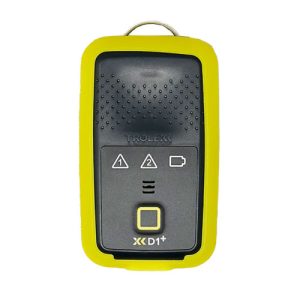Personal Dust Monitors
Personal Dust Monitors
-

Casella Apex2 Series Personal Sampling Pumps
$0.00 -

Casella Flow Detective Sampling Pump Calibrators
$0.00 -

Casella VAPex Series Personal Sampling Pumps
$0.00 -

Casella Vortex3 High Flow Air Sampling Pumps
$0.00 -

DustTech XP Personal Real-Time Dust Monitor
$0.00 -

Particles Plus 1000 Series Personal Sampling Pumps
$0.00 -

Trolex XD1+ Personal Real Time Dust Monitor
$0.00
Personal dust monitoring refers to the process of measuring and analyzing the levels of dust and particulate matter that individuals are exposed to in their immediate environment. This monitoring can be conducted using specialized devices such as personal dust monitors or wearable sensors. The benefits of personal dust monitoring include:
Health and Safety: Dust and particulate matter can have adverse effects on human health, particularly when exposure occurs over prolonged periods or at high concentrations. By monitoring personal dust levels, individuals can identify potential health risks and take appropriate measures to protect themselves. This is especially important in occupational settings where workers may be exposed to hazardous dust, such as construction sites, mines, or manufacturing facilities.
Risk Assessment: Personal dust monitoring provides valuable data for risk assessment and management. By accurately measuring and analyzing dust levels, employers and regulatory bodies can assess the potential risks associated with certain activities or work environments. This information can then be used to develop appropriate control measures and ensure compliance with safety standards and regulations.
Exposure Control: Personal dust monitoring enables individuals to identify and evaluate the effectiveness of control measures in place. By comparing personal exposure levels to established exposure limits, individuals can determine if additional measures are necessary to reduce dust exposure. This information can guide the selection and implementation of engineering controls, personal protective equipment (PPE), and other strategies to minimize dust exposure.
Awareness and Education: Personal dust monitoring raises awareness about the presence of dust and its potential health effects. When individuals have access to real-time data on their personal exposure levels, they become more conscious of the need to protect themselves and others. This awareness can lead to behavioral changes, such as adopting proper hygiene practices, using appropriate PPE, or seeking medical attention if necessary.
Compliance and Accountability: Personal dust monitoring contributes to regulatory compliance and accountability in various industries. By regularly monitoring and documenting dust levels, organizations can demonstrate their commitment to ensuring a safe and healthy work environment. This helps meet legal requirements and minimizes the risk of fines, penalties, and litigation associated with non-compliance.
Research and Development: Personal dust monitoring data can be valuable for research and development purposes. Researchers can analyze the collected data to better understand the sources of dust, its dispersion patterns, and potential health impacts. This knowledge can contribute to the development of improved dust control strategies, occupational health guidelines, and public health policies.
Personal dust monitoring provides many benefits, including protecting individual health, assessing risks, controlling exposure, raising awareness, ensuring compliance, and facilitating research and development efforts. By empowering individuals with information about their dust exposure levels, it enables them to make informed decisions and take proactive measures to mitigate potential risks.
